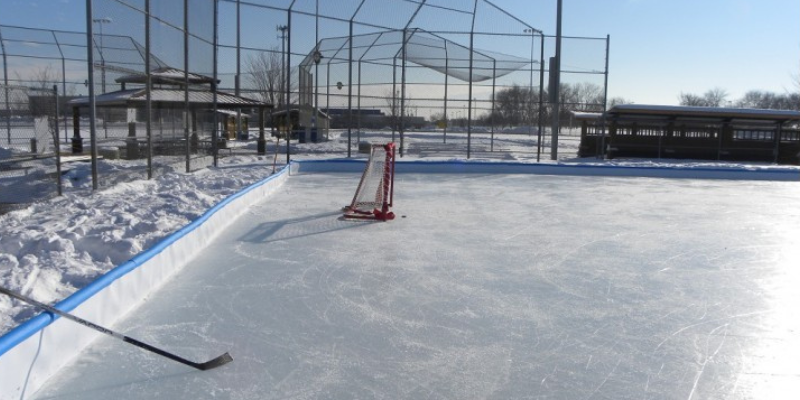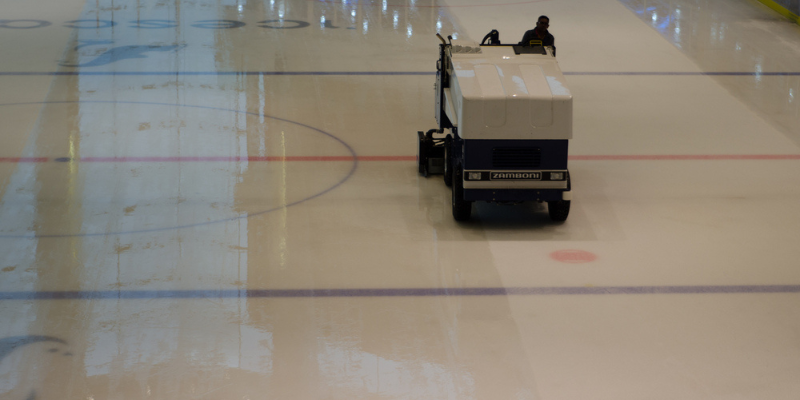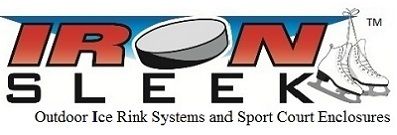Maintaining Your Ice Rink
The main concerns with ice rink maintenance are skatability, snow removal, board inspection, surface crack filling, and resurfacing. As a reminder, the most critical considerations for building a rink are solid board reinforcement, filled board gaps, sufficient bracket spacing, and proper care when laying out the liner.
Snow Removal
Think maintenance before you build your rink. If you have taller boards, consider how you can get a snow blower up on the ice and then back out. Snow must be removed from the ice surface. It acts as an insulator and works like a blanket to keep your ice warm. The rule of thumb is to try to remove the snow as soon as possible, say within 12-18 hours after the snow fall. The snow will degrade your ice surface if not removed.
Board Inspection
Make it a regular practice to walk the exterior perimeter of your rink. Occasionally, some boards may move too much because of an underestimated water level or because the weather patterns have softened up the soil too much. You can still add supports after the fact. With Iron Sleek you can recover from some constructions oversights.

Repairing Surface Cracks
Surface cracks are inevitable so embrace them and repair them. Even NHL ice gets surface cracks in a controlled environment where the ice is kept at between 24 and 26 degrees Fahrenheit. Unfortunately, we have no control over those conditions. Temperatures that near 0 degrees fahrenheit can cause cracking. On the days when it is 28 or 29 degrees, you will have tough ice but it will scar easily and require additional resurfacing and coating. The best skating days for reduced maintenance are in the low 20's. To repair cracks, simply fill the cracks and divots with slush and then resurface the ice by coating it in layers.
Resurfacing Your Rink
Resurfacing your rink throughout the season is an essential park of owning an ice rink and will give you smooth and safe ice to skate on. There are many ways to resurface a rink. The first thing you need is a thorough snow shoveling. Never try to convert snow into ice. Snow is an ice killer. Remove all the snow and coat with water. When coating the rink, be sure to not let the water puddle or pool. Some bring the hose out and spray a light layer of water on the ice.
Others use a rake style resurfacer connected to a hose. Both methods work fine, but the bucket method with the Iron Sleek resurfacer works the best for a few reasons . The first is that hot water has better physical properties for resurfacing ice. It makes smoother ice by melting away imperfections. Consider an NHL Zamboni, it uses steaming hot water. The second is that managing a hose in the middle of winter is very challenging. Hoses get frozen, tangled and they crack in the cold.

One other problem yet with hoses is that they actually melt a gully into the ice that you are trying to repair. It can be counter productive to use a hose if not done with a person managing the hose and one pulling along the resurfacer. When you are bucket resurfacing, be sure to keep moving a a steady pace. This helps to lay a consistent layer of water for smooth ice. For a 40 by 60 rink, a 25 gallon bucket with the Iron Sleek resurfacer does the job. Use that as a reference when you decide what size bucket you choose to use. If you have a bigger rink, buy a bucket with wheels. Be sure to consider how you are going to handle the weight of the water.
It is recommended to only resurface when it is very cold out, 24 degrees fahrenheit or less. It will only take 10 to 15 minutes to firm up as long as you do not make puddles. On more marginally cold days, you will soften your surface causing the rink to be unskatable - wait until night when you shut down the rink to recoat the rink. Let the cold winter night take it from there.
The Slush Problem
Slush is definitely an ice rink owners frustration. Walking on slush is destructive to your rink surface because you will end up leaving footprints all over the ice. Wait patiently until you can walk on a hard surface and then shovel away any loose snow. Do not try to shovel slush off the rink as it is an exhausting effort that further complicates things. Slush formation is not healed in a single day. Start by shoveling loose snow, then resurface the rink and, finally, skate it. After you skate it, most of the air-filled-slush-freeze will be knocked off or scrapped away. When you are done skating, give the rink a thorough shoveling and resurface it with hot water again.
Liner Leaks
If you have a liner leak that you can reach, utilize our waterproof super sticky tape. If you see the hole but cannot reach it, use hot water to cut through the ice so you can reach in to place the tape. Some leaks do not warrant fixing. If you have a slow leak nearing the middle to end of the season, coat water in the area that is getting closest to exposing the liner. You can keep a rink with a small leak going by maintaining the top surface.
